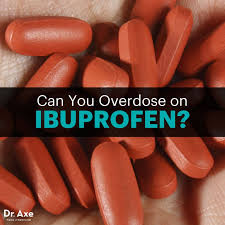Too many people are taking too many anti-inflammatory painkillers, a new study reveals, according to Daily Mail.
Ibuprofen and similar drugs are great for all kinds of aches and pains, but too much of a good thing, in this case, can be deadly by causing ulcers and digestive tract bleeding.
New research found that 15 percent of adults take more than the recommended daily maximum of the pills.
Many people also take the drug every day, a worrisome habit that could contribute the slow erosion of gastrointestinal walls.
Across the board, it seems people have an unhealthy relationship to painkillers.
They take an estimated 30 billion doses of over the counter or prescription drugs similar to ibuprofen every year.
While non-steroidal anti-inflammatory drugs (NSAIDs) like ibuprofen are not addictive like more potent opioids painkillers, they are not without their own dangerous side effects.
‘The attitude that users can choose their own dose regardless of label directions, along with poor knowledge of dosing limits, is associated with exceeding the daily limit,’ said lead study author Dr David Kaufman.
Pain is most often cause by inflammation which is an immune system response to tissue damage or foreign invaders into the body.
Ibuprofen, like all NSAIDs, blocks the production of certain enzymes that then in turn would fuel the production of chemicals, called prostaglandins, to cause inflammation.
But some of the chemicals in the prostaglandin family ensure that the stomach is coated in protective mucus to keep digestive acids from irritating or even eating away at the organ tissue.
So the more inflammation blocking ibuprofen you take, the more protection is being stripped away from the stomach.
‘These drugs can have serious side effects, including gastrointestinal bleeding and heart attacks, and are often taken without medical oversight because many products are available over-the-counter,’ Dr Kaufman said.
For the study, 1,326 people who reported taking ibuprofen in the previous month completed online medication diaries every day for one week.
All of the participants took ibuprofen during the week, and 87 percent of them only used over-the-counter, or nonprescription, versions.
Overall, 55 percent of participants took ibuprofen at least three days during the week, and 16 percent took it every day.
In addition to ibuprofen, 37 percent of the participants reported taking at least one other NSAID during the week, most often aspirin or naproxen. Less than half of them recognized that all of the products they were taking were NSAIDs.
Combining multiple forms of an NSAID – especially unwittingly can increase the risk of stomach ulcers or damage.
Though recommended dosage is up to a doctor’s discretion, it is generally recommended that adults take no more than 3200mg divided over the course of the day, or up to 400mg of ibuprofen every four to six hours.
The participants’ frequent overdosing could dangerously deprive them of protective stomach coating.
One limitation of the study is that researchers only focused on recent and current ibuprofen users, which may not reflect what doses might be typical for sporadic or new users, the authors note.
Even so, the findings highlight a potential downside of making NSAIDs widely available without a prescription, said Dr Gunnar Gislason.
‘I believe that the message sent to the consumer when these drugs are widely available in convenience stores and gas stations is that these drugs are safe and you can use them safely for pain relief – thus no need for reading the label,’ Dr Gislason, who wasn’t involved in the study, said.
Even when people do read the label, they may still ignore it.
‘If the recommended dosage does not give sufficient pain relief, it is easier to take more pills than seeking professional advice from a healthcare person or doctor,’ Dr. Gislason added.
N.H.Kh

